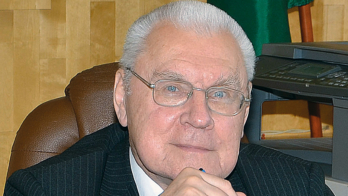
US participation in the LHC. Credit: Family photograph
George Trilling passed away in Berkeley, California, on 30 April at the age of 89. Born in Poland, he completed his PhD at Caltech in 1955 and two years later joined the University of Michigan. In 1960 he joined the faculty at the University of California, Berkeley and the scientific staff at what is now called the Lawrence Berkeley National Laboratory (LBNL). He followed Don Glaser, whose invention of the bubble chamber provided a new way to view particle interactions, and teamed up with Gerson Goldhaber.
The Trilling–Goldhaber group used bubble chambers developed at Berkeley to study K-meson interactions. In the early 1970s the group joined SLAC colleagues led by Burt Richter and Martin Perl to build the Mark-I detector for the SPEAR electron–positron collider. The Mark-I collaboration went on to discover the J/ψ resonance, charmed particles and the tau lepton. Beginning in the 1980s, the group continued their collaboration with SLAC to construct the Mark- II detector, which was first installed at SPEAR, and later moved to the higher energy PEP collider, where it enabled the measurement of the lifetime of the B meson among other important results.
George was a key figure in the many US studies in the 1980s that led to the successful proposal for the Superconducting Super Collider (SSC). He served on the SSC board of overseers and helped foster the early SSC design phase at LBNL. He initiated and led the Solenoidal Detector Collaboration, the first major experiment approved for the SSC in 1990. Despite retiring in 1994, he was instrumental in helping to organise and negotiate the US participation in the LHC.
Throughout his career, George was asked to take on important leadership roles. At the age of 38 he became chair of the UC Berkeley physics department. From 1984 to 1987 he was director of the physics division at LBNL, where he guided a major evolution towards precision semiconductor detectors – still a dominant theme at the lab today. Work on pixel detectors for the SSC, custom ASIC design, the Microsystems Lab and the CDF silicon vertex detector all began under his leadership. The Berkeley group is now a major participant in the ATLAS collaboration at the LHC.
A member of the National Academy of Sciences, in 2001 George served as president of the American Physical Society. He also chaired innumerable national panels, committees and task forces. We shall miss him greatly.





